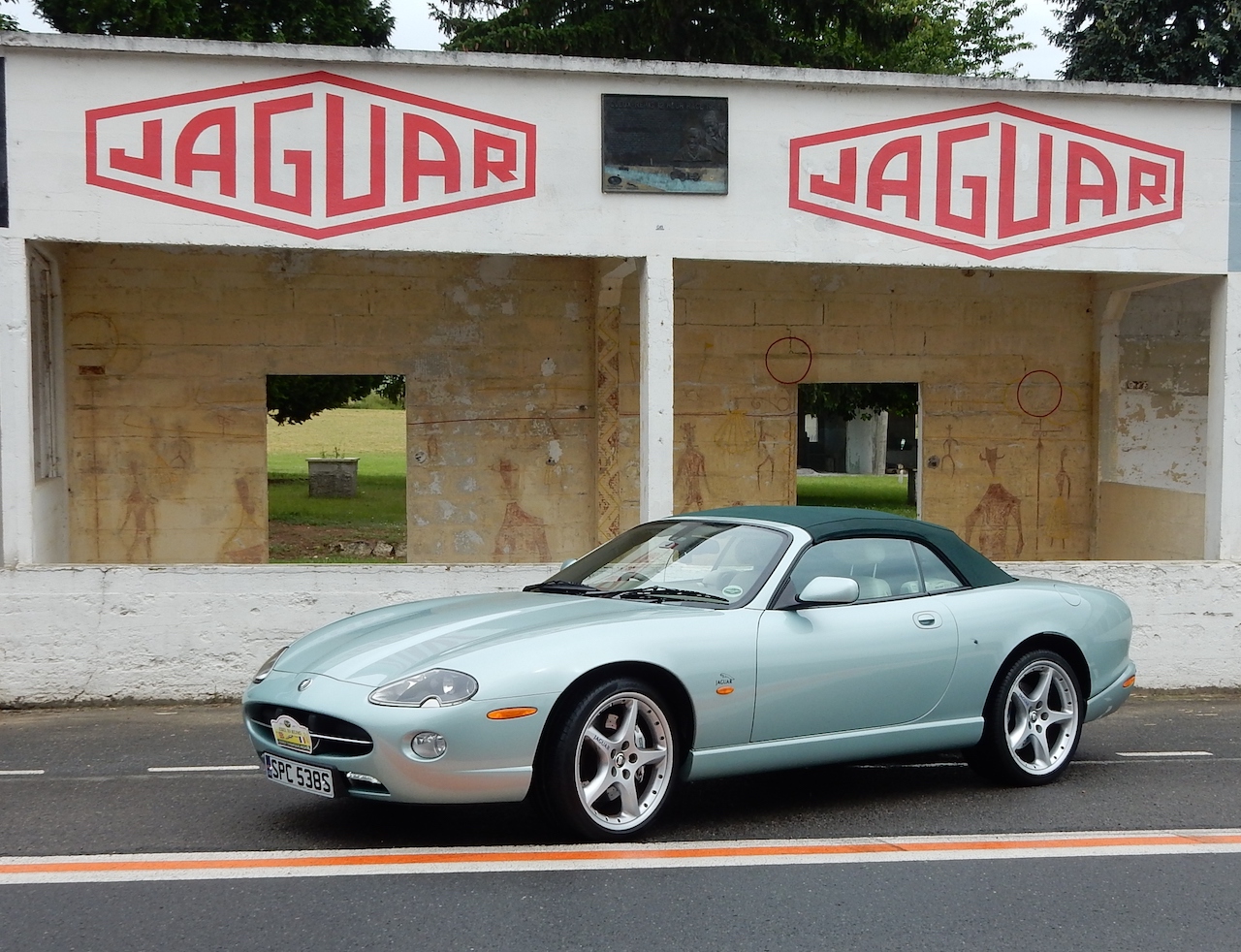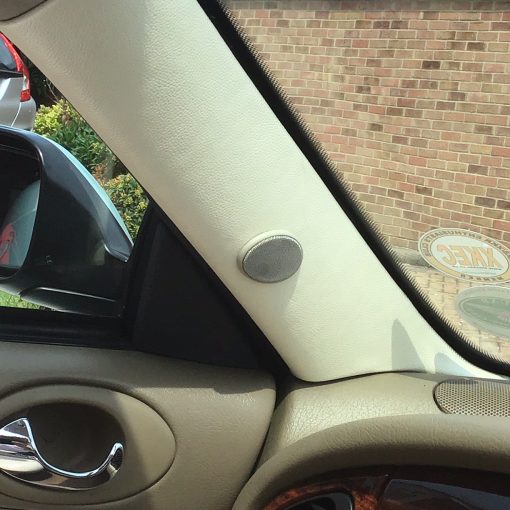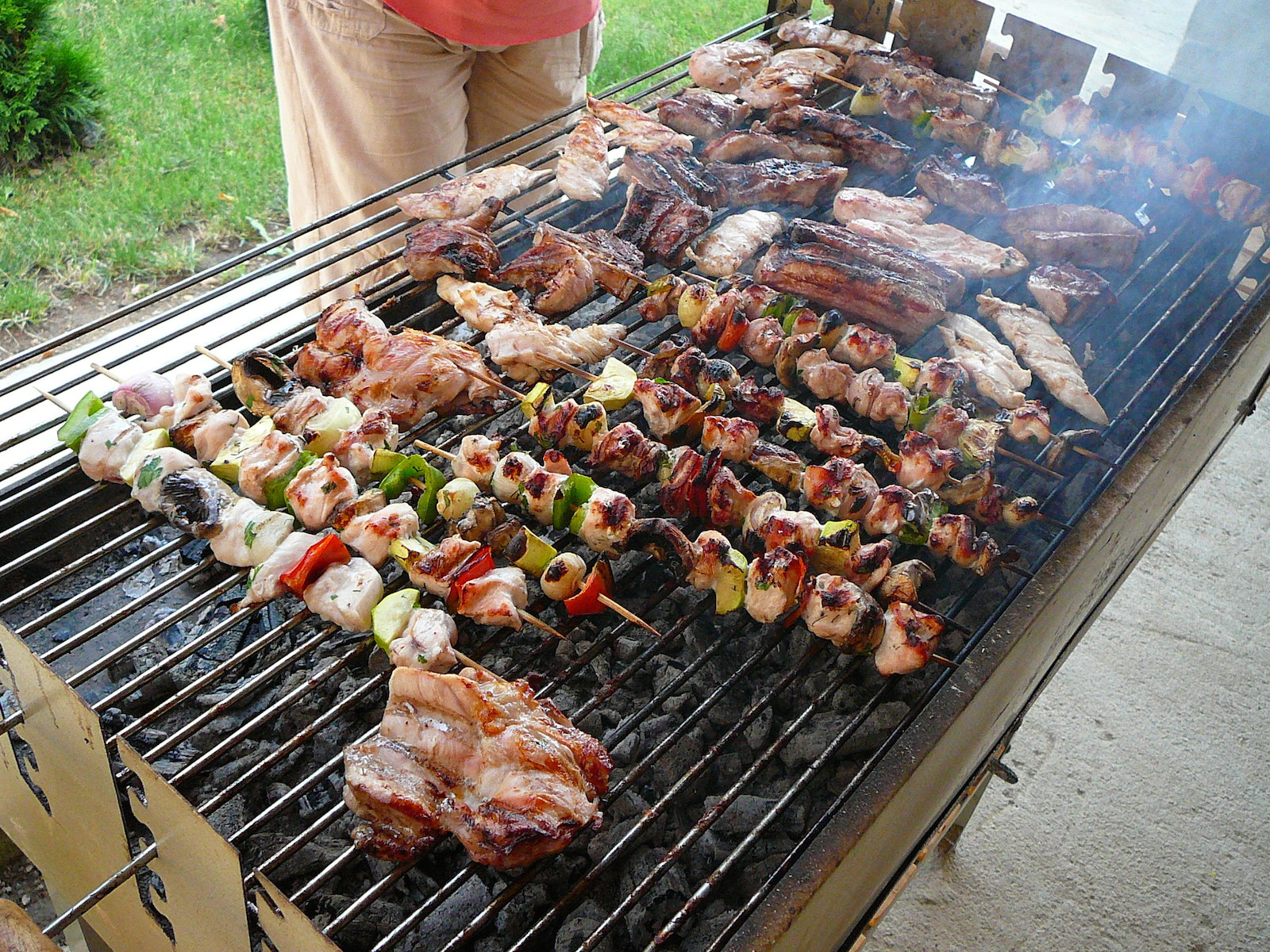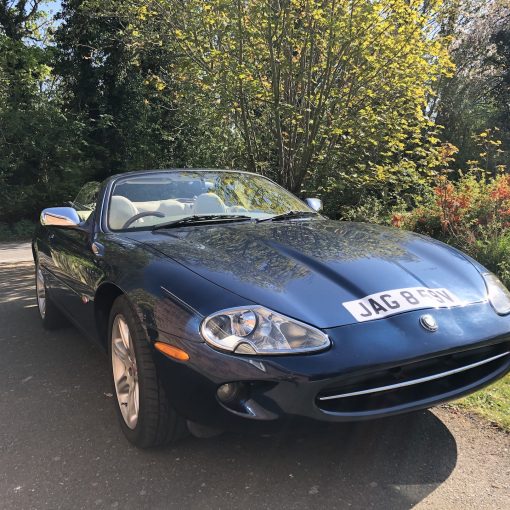This October marks 25 years since the Jaguar XK8 (project code X100) was launched in 1996. It replaced the ageing XJS that had been in production for 21 years, following various revisions throughout its life.
The new model was dramatically revealed from a wooden crate as part of the press conference, reminiscent of the E-type reveal that also took place in Geneva some 35 years earlier. The new XK8 was a typical Jaguar, combining tradition with innovation. Inspiration for its elegant design clearly came from the style of classic Jaguar sports cars of the past, notably the E-type of the 1960s, but interpreted in a modern manner. The car was styled by Fergus Pollock, working under the late Geoff Lawson. The Project Director was the engineer Bob Dover, who went on to become Jaguar’s Chairman.
The XK8 was available in two-door coupé or two-door convertible body styles with the new 4.0-litre Jaguar AJ-V8 engine. In 1998, the XK8 was introduced with a supercharged version of the engine. In 2003, the engines were replaced by the new 4.2-litre AJ33 engines in both the normally aspirated and supercharged variants.
Cost constraints meant that the new car had to use an existing platform, which was a development of the old XJ-S platform, itself a direct descendent of the XJ6 of 1968. The major differences were in the new double wishbone front suspension set-up and grafting on the modified and improved XJ40 version of the famous IRS assembly, first designed for the E-type. However, the power train was all new—an excellent V8 four-cam 32-valve engine also used in the XJ8 (X308). For reasons best known to Jaguar, only the top 290bhp 4.0 unit was offered in the XK8, while rivals such as Mercedes or BMW were marketing a broader choice to entice buyers.
Despite the XK8’s adequate pace, it wasn’t long before cries for more power were heard, answered in the shape of the XKR in spring 1998. Thanks to its Eaton M112 supercharger, no less than 370bhp was now on tap and its torque was so massive that a sturdy Mercedes automatic gearbox was the only one deemed strong enough to handle the vast reserves of grunt delivered.
Roadholding was courtesy of standardised CATS chassis (Computer Active Technology Suspension) that was optional on the standard coupe but sensibly standard on convertibles. Apart from the brawnier 300bhp 4.2-litre V8, (with six-speed auto boxes in 2002), the XK8 range remained largely untouched during its decade-long production run, save for detail changes to the trim and appointments. Always available as a coupé or convertible, either a Classic or Sport trim could be specified with the former comprising traditional wood and leather, while Sport added leather seat facings with embossed centre panels and a charcoal-look dash layout. Naturally, they are sumptuously equipped with all the modern toys you’d expect.
As indicated, 2021 is the 25th anniversary of the XK8/R (X100) and various shows are being planned around this model, Covid allowing. The national JEC is planning to celebrate the model along with the E- Type’s 60-year anniversary and various Jaguar milestones at its national event at Blenheim Palace in May. Also, the XKEC will be doing the same at Gaydon in Warwickshire on Saturday 4th September 2021. It is possible that other events will be planned but obviously, due to the coronavirus restrictions, nothing is definite yet.
Should I buy one?
As is well documented, for the early XK8s (1996- 2001) Jaguar chose to coat the aluminium bores of their new V8 engine in Nikasil as it was a tough, friction-reductive material that had racked up notable success within motorsport. However, not long after those initial sales of the XK8, Jaguar started to receive reports of reluctant starting and reduced drivetrain power while out on the road; Jaguar did replace some of these engines under warranty.
Another big issue was that the timing chain tensioners were made of plastic. Over time, these deteriorate and break, causing terminal damage to the engine. A replacement engine can cost thousands. Better tensioners were fitted to cars built after the start of 2002.
If you should be considering the purchase of an XK8/R, I recommend purchasing Nigel Thorley’s The Essential Buyer’s Guide – XK8/XKR 1996-2005. This book covers all the points to look out for before purchase. Today, you can pick up a coupé for around £3,000 to £4,000 and a convertible for about £1,000 more.
Is it worth considering? Many motoring magazines have indicated that this car as a ‘modern classic’ and will certainly increase in value as time goes by. Will it reach the echelons of the E-type? Possibly not. In my opinion, it most certainly will attract the same prices as the XJS is currently obtaining, possibly more. Only time will tell.
How many are on the road today in the UK? Current data (no data updated for last quarter of 2020 before going to press) indicates that in the UK, there were 1,880 XK8/R coupés and 1,407 convertibles on SORN in the third quarter of 2020, while 4,298 XK8/R coupés and 3,844 convertibles, including of course my own cherished example, were licensed to be on the road.
Doug Warren





